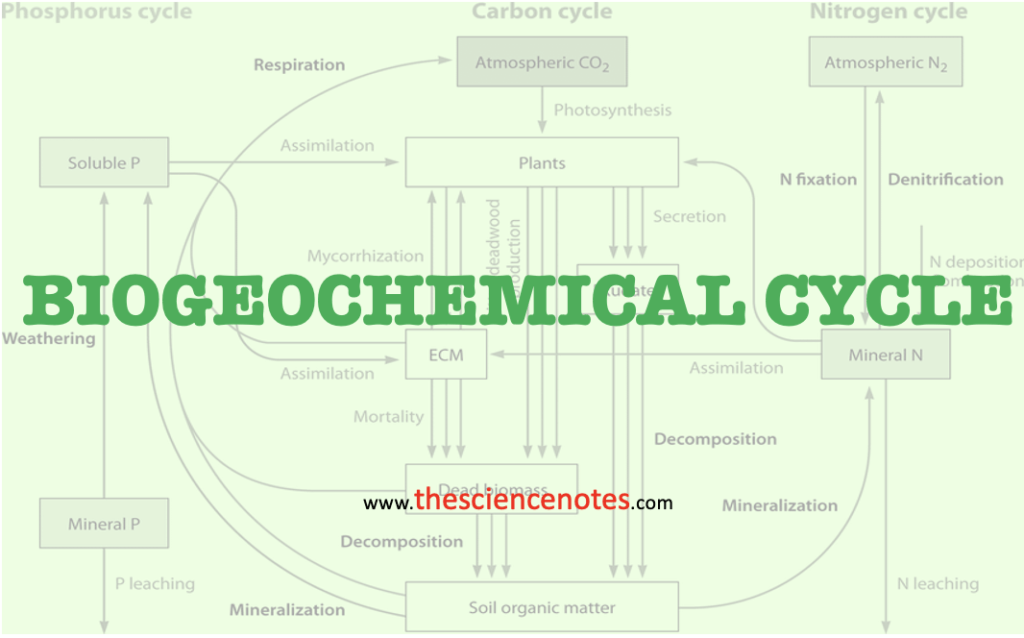A biogeochemical cycle is the flow of matter, primarily nutrients, through various biological, geological, and chemical processes in ecosystems. These cycles entail the exchange of elements such as carbon, nitrogen, phosphorus, and sulfur, among others, between living beings, the atmosphere, soil, and water bodies.
According to Encyclopedia of Ecology, 2008, “Biogeochemical cycles represent the main system by which the energy of the Sun is transformed into energy of the chemical compounds by living beings and products of their activity.”

Elements are converted and transmitted during these cycles by numerous processes.This includes the process of photosynthesis, respiration, decomposition, weathering, and sedimentation. Carbon, for example, is taken up by plants during photosynthesis. And released back into the atmosphere via respiration. Whereas nitrogen is drawn up from the soil via plants and released by decomposition of decaying organisms or waste materials.

Types of Biogeochemical cycle
There are several types of biogeochemical cycles, each associated with the cycling of a particular element or set of elements. Some of the major types of biogeochemical cycles include:
- Carbon cycle: This cycle involves the movement of carbon between the atmosphere, oceans, and living organisms. Carbon is taken up by plants through photosynthesis. And released back into the atmosphere through respiration or decomposition.
Learn more: Carbon cycle
- Nitrogen cycle: This cycle involves the movement of nitrogen between the atmosphere, soil, and living organisms. Nitrogen is converted into different forms, such as ammonia and nitrates, by bacteria and other microorganisms in the soil.
Learn more: Nitrogen cycle
- Phosphorus cycle: This cycle involves the movement of phosphorus between rocks, soil, water, and living organisms. Phosphorus is released from rocks through weathering and is taken up by plants and other organisms through the soil.
Learn more: Phosphorus cycle
- Sulfur cycle: This cycle involves the movement of sulfur between the atmosphere, soil, and living organisms. Sulfur is released into the atmosphere by volcanic activity and is taken up by plants and other organisms through the soil.
Learn more: Sulfur cycle
- Water cycle: This cycle involves the movement of water between the atmosphere, oceans, and land. Water is taken up by plants and other organisms through the soil and is released back into the atmosphere through evaporation and transpiration.
Learn more : Water cycle
These cycles are interconnected and often overlap, as elements are moved and transformed through various biological, geological, and chemical processes. Understanding these cycles is important for maintaining the health and sustainability of ecosystems and the planet as a whole.